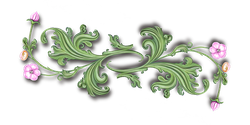Islamic Art - first lines to draw the grid
Hi friends!
Before showing you the drawing of these helplines I need you to remember that here we draw only using a ruler and a compass in order to understand the underlying geometric concepts in the design.
Understanding these geometric concepts will allow you to draw on large surfaces such as a wall or curved surfaces such as a jar to mention a few examples, in addition to giving you the tools that will enhance your creativity.
You are free to use drawing software or programming tools to make your designs, which simplifies the work but the freedom to go further in the creative process is given only by the knowledge of what is the base, the genesis of this art.
Furthermore, if you need to quickly sketch some idea you have in mind, the knowledge of these geometric principles will allow you to draw it freehand in a few minutes.
I would also like to tell you that these concepts and others that we have already seen previously in Perspective or in Celtic Art are cumulative, some do not rule out others, on the contrary, what we have learned in other topics only reinforces or complements what we are seeing now, so I invite you to review previous posts that may be very useful to you.
Finally, I remind you that an important part of creative work consists of finding new solutions to new problems based on the guidelines we have already learned. We must try to be creative in all aspects.
At this stage, we have the helplines for the fourfold design ready to be repeated on the work surface.
Firstly, we'll draw the horizontal and vertical lines given by the more external square of the future pattern as shown below.

Then, with the compass we measure the side of the square.

So we can repeat that measurement up or down like I did.

Now, we can draw another horizontal line at that intersection point.
At this stage, you may want to repeat that measurement across the surface in all directions to draw the following lines. That might be fine, of course, but you'll miss out on practising the geometric fundamentals that are necessary to understand the whole process.

To continue, we'll draw a diagonal line through the square as shown below. This way, you'll find the intersection point that will allow you to draw the next line, this time a vertical line.

In this way, we obtain four squares or cells and we get four new intersection points too to draw two new diagonals.

These diagonals will also be part of the next helplines that we will draw, as seen in the two previous posts.

By drawing the respective horizontal and vertical lines at the new intersection points we obtain the next grid cells and so on, across the entire surface.

I drew some squares in red to show the process of building the repetitive pattern.

I hope this has been helpful and resulted in an incentive for you to advance in your knowledge of Islamic Art.


THE QUEST TEAM has supported your post. We support quality posts, good comments anywhere, and any tags
Thank you Jorge for explanation , now it is clear with this lines to create equal square all across the paper. I wonder how the people in old time did it, if they also used this technique. In Arabian mathematic was very well developed and I would not surprise if they use the same technique that you describing.